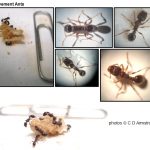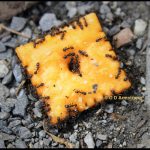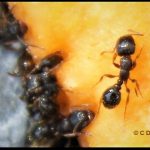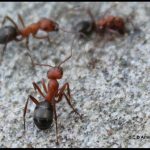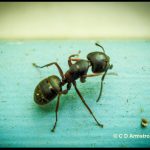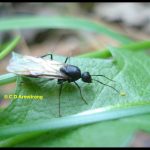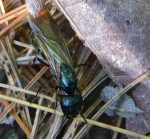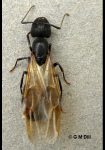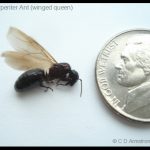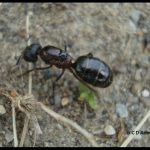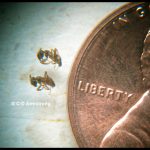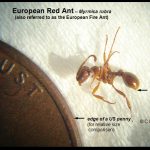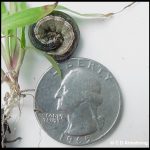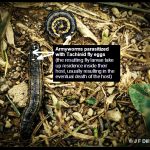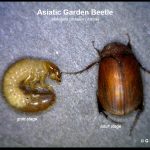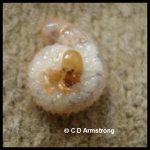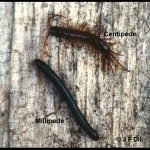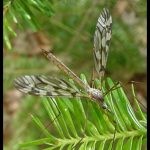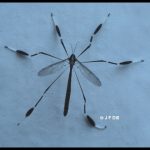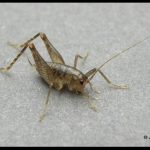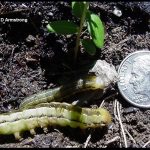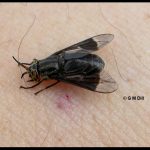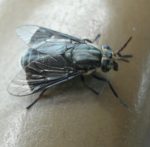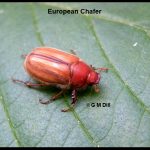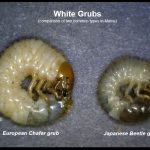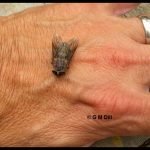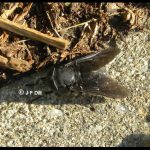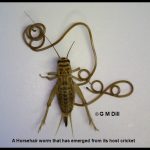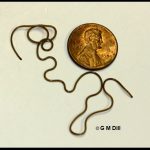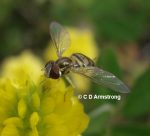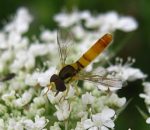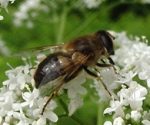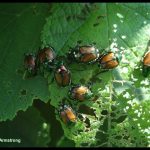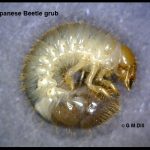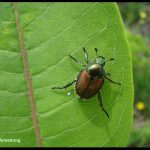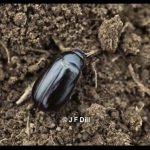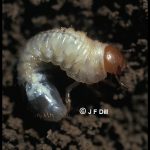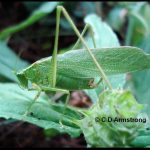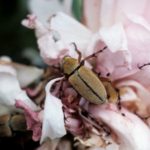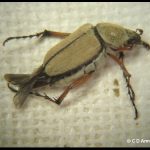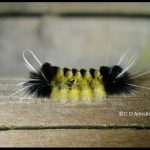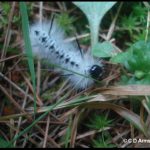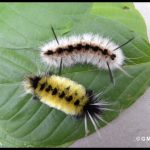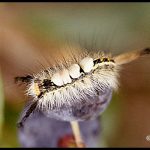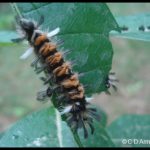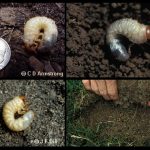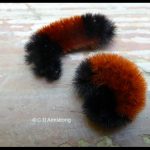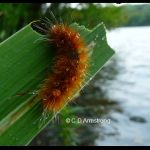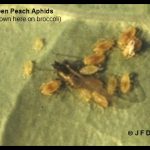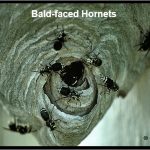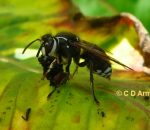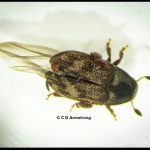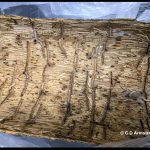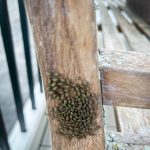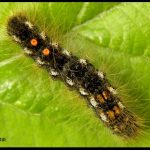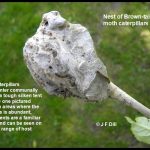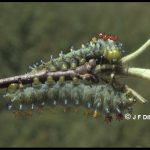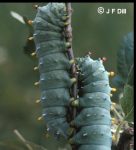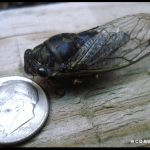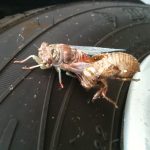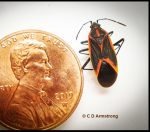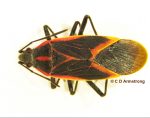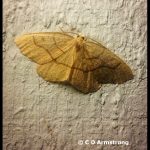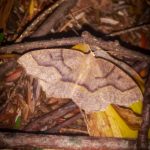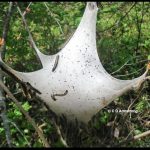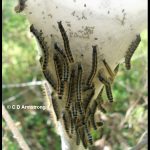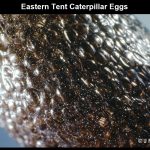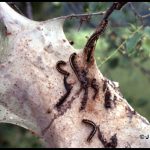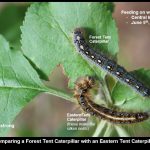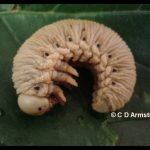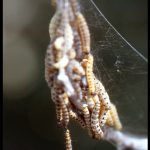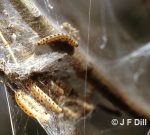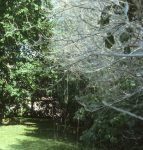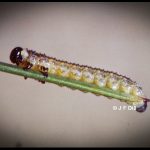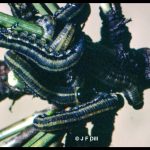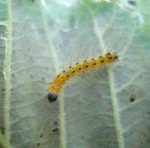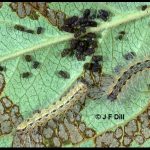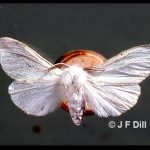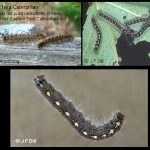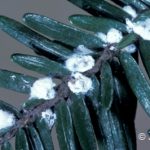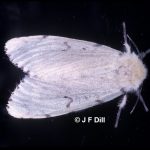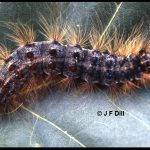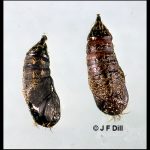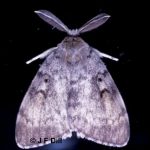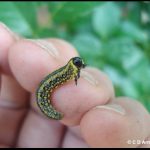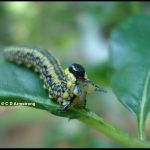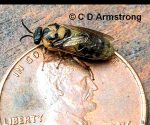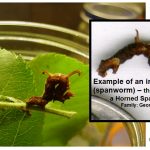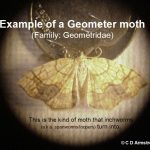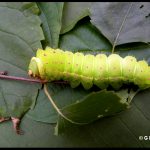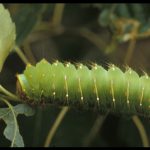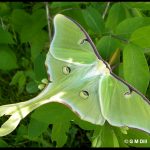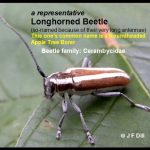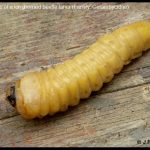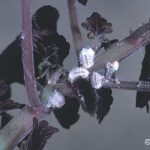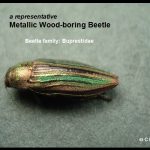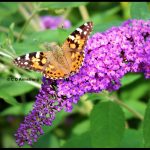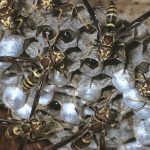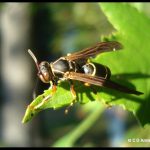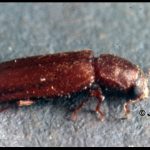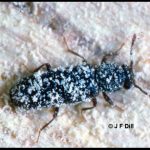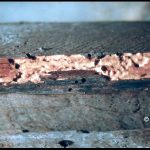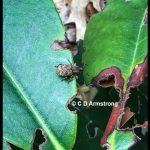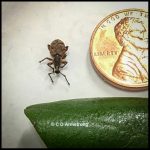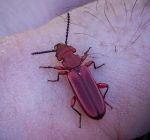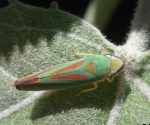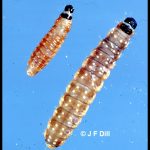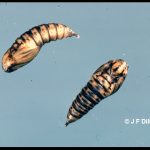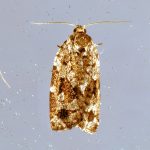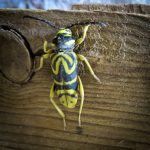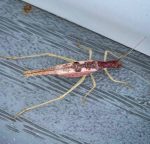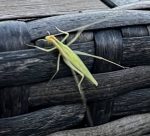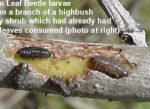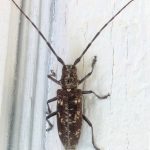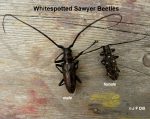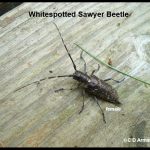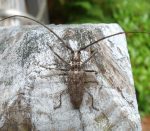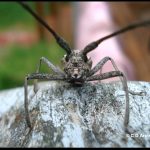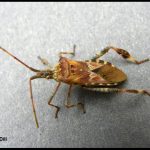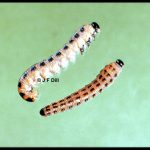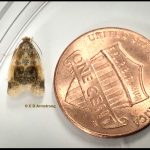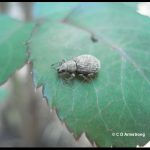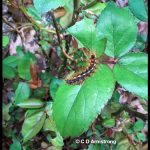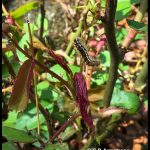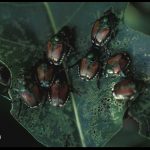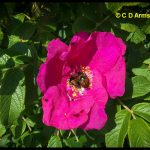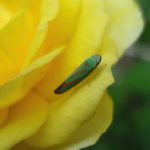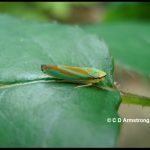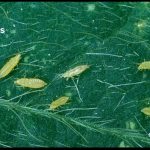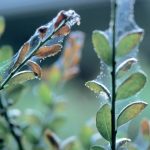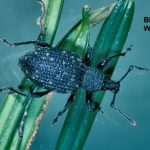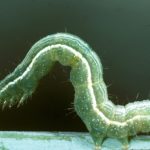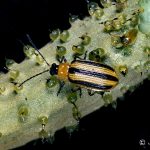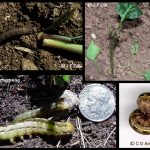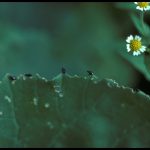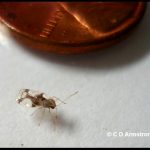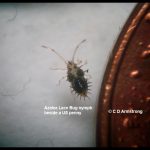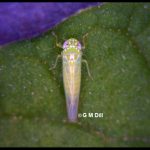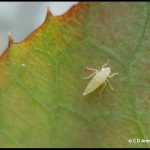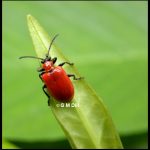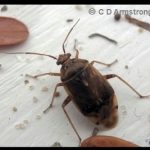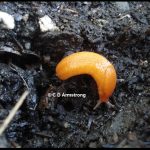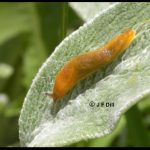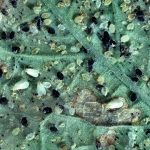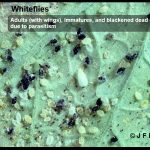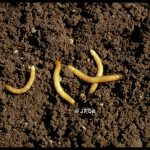Insect ID: Insects Found in the Yard and Landscape
Lawn / Grassy Area
- Ants (especially Pavement Ants which are pictured here)
- Pavement Ants
- Pavement ants
- Eastern Black Carpenter Ant (worker) (Camponotus pennsylvanicus) (central Maine; 6/13/2009)
- A male Carpenter Ant
- Carpenter Ant (Winged Queen)
- Carpenter Ant (Winged Queen)
- Carpenter Ant (Winged Queen)
- Carpenter Ant Queen (wingless stage; they shed their wings after mating)
- Cornfield Ants
- European Red Ant — Myrmica rubra (also referred to as the European Fire Ant) (Invasive)
- Armyworm Caterpillar
- Pair of armyworms parasitized by one or more tachinid flies
- Asiatic Garden Beetle (grub and adult)
- Asiatic Garden Beetle grub (Note: Correct ID requires careful examination of the grub’s rastral pattern of hairs because there are many other species of “white grubs” that otherwise look very similar to one another)
- Centipedes and Millipedes
- Example of a Crane Fly (this one is a “Large Crane Fly” in the Tipulidae family)
- Phantom Crane Fly (Family Ptychopteridae)
- Camel Cricket
- Pair of False Armyworm cutworms
- Deer Fly (their larvae are aquatic)
-
Deer Flies
(their larvae are aquatic)
- European Chafer
- Comparing grubs of European Chafer and Japanese Beetle
- Horse Fly
- Horse Fly
- A Horsehair worm that has emerged from its host cricket
- Horsehair Worm (these are not insects, of course)
- Transverse-banded Flower Fly (Eristalis transversa) (another example of a species that mimics bee/yellowjacket patterning)
- Margined Calligrapher (Toxomerus marginatus) feeding on pollen and/or nectar from a hop clover flower; 7/7/2008 (their larvae feed on aphids, thrips, and small caterpillars)
- Tufted Globetail (Sphaerophoria contigua) (Photo courtesy of Dana Wilde from Unity, ME) (mid July, 2013)
- Common Drone Fly (Eristalis tenax) (Drone fly is sometimes written as one word: Dronefly)
- Common Drone Fly (Eristalis tenax) (a species of syrphid fly that mimics a honey bee drone)
- A cluster of Japanese Beetles
- Japanese Beetle Larva/Grub
- Japanese Beetle (on a milkweed leaf)
- May Beetle / June Beetle
- June Beetle grub
- Katydid (Northern Bush Katydid, Scudderia septentrionalis) (Etna, ME; 8/6/2010)
- Rose Chafers
- Closer view of a Rose Chafer (The rose chafer is a type of scarab beetle)
- Spotted Tussock
- Hickory Tussock (the hairs on many tussock caterpillars can cause an itchy rash)
- Tussock caterpillars: Hickory Tussock (top) and Spotted Tussock (bottom).
- White-marked Tussock Caterpillar (feeding on lowbush blueberry)
- Milkweed Tussock Caterpillar (Euchaetes egle) (Etna, ME; 8/23/2009) (this caterpillar is not an invasive species)
- White Grubs
- White Grub damage to a lawn
- White Grub damage to a lawn
- Woollybear Caterpillars (Banded Woollybear)
- Yellow Bear Caterpillar / Yellow Woollybear (Spilosoma virginica) (Greenville, ME; 9/4/2011)
Lawn / Grassy Area:
- Ants
- Armyworms
- Asiatic Garden Beetle
- Carpenter Ants
- Caterpillars
- Centipedes
- Chinch Bugs
- Crane Flies
- Crickets (dark, moist areas)
- Cutworms
- Deer Flies
- European Chafer
- Horse Flies
- Horsehair Worm
- Hover Flies (also called Flower Flies or Syrphid Flies)
- Japanese Beetles
- June Beetles (attracted to lights on summer nights)
- Katydids (also known as long-horned grasshoppers)
- Large Yellow Underwing (Oregon State Univ)
- Rose Chafers
- Sod Webworm (Penn State)
- Tussock Caterpillars
- White Grubs (in the soil)
- Woollybear Caterpillars (BugGuide.net): Banded Woollybear and Yellow Woollybear
- Yellowjackets/Hornets/Wasps
- Non-insect Possibilities:
Trees and Shrubs:
- Green Peach Aphids on broccoli
- Azalea Lace Bug adult beside a U.S. penny
- Bald-faced Hornets (guarding their nest)
- Bald-faced Hornet
- Eastern Ash Bark Beetle (Hylesinus aculeatus) (July 21st, 2021; from firewood in Pittsfield, Maine) (with five phoretic mites hitching a ride on its back)
- Interior portion of ash bark showing the tunneling and brood chambers carved out by Eastern Ash Bark beetles (The egg galleries run perpendicular to the tree’s branch and/or trunk) (Easton, ME; 3/10/2022)
- Barklice nymphs of Cerastipsocus venosus (often called “Tree Cattle” due to their herding behavior) (Searsport, ME; 8/6/2023) (Photo courtesy of J. Kristo)
- Browntail Moth (late instar caterpillar stage)
- Browntail Moth (example of a spring/early summer-season nest)
- Carpenter Ants
- Carpenter Ant (Winged Queen)
- Cecropia Caterpillars
- Cecropia Caterpillars
- Cecropia Moth
- An Annual / Dog-day Cicada found in Maine
- A newly-molted Cicada and its former exoskeleton; Photo courtesy of April and Lee Townsend (Portland, ME)
- a Cicada nymph (photo by Griffin Dill)
- Cicadas (comparing Periodical cicadas with an Annual cicada)
- Example of a Crane Fly (this one is a “Large Crane Fly” in the Tipulidae family)
- Phantom Crane Fly (Family Ptychopteridae)
- Eastern Boxelder Bug (Boisea trivittata) (adult stage) (Hallowell, ME; 4/19/2021)
- Eastern Boxelder Bug (Boisea trivittata) (adult stage) (Hallowell, ME; 4/19/2021)
- Eastern Hemlock Looper (Lambdina fiscellaria) (resting by a porch light in Stetson, Maine; 9/15/2019)
- Eastern Hemlock Looper (Lambdina fiscellaria) (Farmington, Maine; 9/8/2020) (Photo courtesy of Hannah A.)
- A mature Eastern Tent Caterpillar (Central Maine: June 5th, 2015)
- A nest of Eastern Tent Caterpillars (Mid-May, 2012; Aurora, ME)
- Closer view of the bottom of the nest shown in the adjacent photo
- Eastern Tent Caterpillar (egg masses)
- Closeup view of an Eastern Tent Caterpillar egg mass
- A nest of Eastern Tent caterpillars
- Comparing the Eastern Tent Caterpillar (bottom) with a Forest Tent Caterpillar (above). Both were feeding on the leaves of a wild apple tree. The Eastern tent caterpillars make silken nests in the forks of their host trees whereas the forest tent caterpillars make no nests at all, in spite of having “tent” in their name (Etna, ME; 6/5/2015)
- Elm Sawfly (larval stage) (7/27/2009; Pittsfield, ME)
- Euonymus Caterpillars
- Euonymus Caterpillars
- A heavy infestation of Euonymus caterpillars
- A heavy infestation of the Euonymus caterpillars
- European Pine Sawfly larva
- European Pine Sawfly larvae
- Fall Webworm caterpillar (early stage of development) (these build nests but they are not considered to harm most trees that are generally healthy)
- Pair of Fall Webworm caterpillars feeding on a crabapple leaf
- Fall Webworm Moth (see also an example of the spotted form of the fall webworm moth)
-
Forest Tent Caterpillars
(these do NOT build nests)
- Hemlock Woolly Adelgid (an invasive pest)
- Hickory Tussock (the hairs on many tussock caterpillars can cause an itchy rash)
- Spongy Moth (female)
- Spongy Moth caterpillar (final instar/mature larva) (Common Name: Spongy Moth)
- A pair of Spongy Moth pupae
- Spongy Moth (Lymantria dispar) (male)
- Spotted Tussock
- Tussock caterpillars: Hickory Tussock (top) and Spotted Tussock (bottom).
- Species of Horntail (also called Wood Wasps) (this one is the Pigeon Horntail, Tremex columba)
- Introduced Pine Sawfly larva (July 11, 2015) (central Maine)
- Introduced Pine Sawfly larva (July, 2015)
- Introduced Pine Sawfly adult (Etna, ME; 4/15/2020)
- Example of an inchworm (spanworm/looper) (Geometridae family)
- Example of a moth in the Geometridae (inchworms) family of moths.
- A cluster of Japanese Beetles
- “The Laugher” Caterpillar (Bangor, Maine; 9/22/2017)
- Luna Moth caterpillar
- Luna Moth Caterpillar
- Luna Moth
- Example of a Longhorned Beetle (so-named because of their very long antennae; this one shown here is a Roundheaded Apple Tree Borer)
- Larval stage of a longhorned beetle (such as the Round-headed Apple Tree Borer at left)
- Mealybugs (Family Pseudococcidae)
- Metallic Wood-boring Beetle (Family: Buprestidae)
- Painted Lady Butterfly (Vanessa cardui) (Camden, Maine; 8/14/2017)
- Painted Lady Butterfly (Vanessa cardui) (Schoodic Point in Winter Harbor, Maine; 10/10/2017)
- Guinea Paper Wasps (Polistes exclamans)
- Northern Paper Wasp (Polistes fuscatus) (known also by three other common names: Dark Paper Wasp, Golden Paper Wasp and the Common Paper Wasp)
- Powderpost Beetle
- Powderpost Beetle covered with some of the fine wood powder from the feeding damage they cause
- Feeding damage from Powderpost Beetles
- Raspberry Weevil (also known as the Clay-colored Weevil) (Otiorhynchus singularis) (very similar to the Black Vine Weevil) (this one was found feeding on a rhododendron in central Maine; 5/16/2021)
- Raspberry Weevil (Otiorhynchus singularis) (found feeding on a rhododendron in central Maine; 5/19/2021)
- Red Flat Bark Beetle (Cucujus clavipes) (they are predators on other insects) (York County, ME; April 11th, 2022) (Photo courtesy of P. Wirth)
- Rhododendron Leafhopper (Graphocephala fennahi) (Greenville, ME; 8/26/2007)
- Rose Chafers (beetles)
- Closer view of a Rose Chafer (The rose chafer is a type of scarab beetle)
- Spruce Budworm Larvae
- Spruce Budworm (larva)
- Spruce Budworm (pupal stage)
- Spruce Budworm
- Sugar Maple Borer (Glycobius speciosus) (6/13/2021; Panton, Vermont — but also found in Maine) (Photo courtesy of M. O. Metcalf)
- Two-spotted Tree Cricket (Neoxabea bipunctata – female) (Wells, ME; 9/4/2022) (Photo courtesy of Tom Baxter)
- Narrow-winged Tree Cricket (Snowy Tree Cricket) (Oecanthus niveus) (Wells, ME; 8/24/2022) (Photo courtesy of Tom Baxter)
- Viburnum Leaf Beetle Larvae (arrowwood and highbush cranberry pest)
- Whitespotted Sawyer Beetle (female); Photo by C. Armstrong
- Whitespotted Sawyer Beetles
- Whitespotted Sawyer beetle (female)
- Northeastern Pine Sawyer
- Northeastern Pine Sawyer
- Western Conifer Seed Bug
- White Pine Sawfly larvae
- Woollybear Caterpillars (Banded Woollybear)
- Yellow Bear Caterpillar / Yellow Woollybear (Spilosoma virginica) (Greenville, ME; 9/4/2011)
Trees and Shrubs:
- Annual Cicada
- Ants
- Aphids | see also: Aphid and Adelgid Pests of Conifers [pdf] (Oregon State University)
- Asian Longhorned Beetle (no confirmed sightings in Maine as yet)
- Azalea Lace Bug
- Azalea Leafminer
- Bald-faced Hornets
- Bark Beetles
- Barklice
- Boxelder Bugs (BugGuide.net)
- Browntail Moth/Caterpillar
- Carpenter Ants
- Caterpillars
- Cecropia Moth
- Cicadas
- Crane Flies
- Eastern Boxelder Bugs (BugGuide.net)
- Eastern Hemlock Looper
- Eastern Tent Caterpillars
- Elm Sawfly
- Emerald Ash Borer (invasive)
- Euonymus Caterpillars
- European Pine Sawfly
- Fall Webworm
- Forest Tent Caterpillars
- Golden Paper Wasps (BugGuide.net)
- Hemlock Looper
- Hemlock Woolly Adelgid (invasive)
- Hickory Tussock Caterpillar
- Inchworms (Loopers/Geometers) (USGS) | See also Caterpillars of Eastern Forests (pp 69-85) (US Forest Service)
- Introduced Pine Sawfly
- Lace Bugs
- Laugher (Charadra deridens)
- Longhorned Beetles (and Roundheaded Borers) (Iowa State Univ.)
- Loopers
- Luna Moth
- Lymantria dispar
- Mealybugs (NC State Extension)
- Metallic Wood-Boring Beetle (Univ. of Minnesota Extension)
- Moths
- Northeastern Pine Sawyer Beetle
- Painted Lady Butterfly
- Paper Wasps/Yellowjackets/Hornets
- Pennsylvania Wood Roach
- Polyphemus Moth
- Powderpost Beetles
- Raspberry Weevil (likes rhododendrons as well)
- Red Flat Bark Beetle (Penn State / New Kensington)
- Rhododendrons:
- Azalea Leafminer
- Black Vine Weevil and Raspberry Weevil (both weevil species feed during the night)
- Lace Bugs
- Mealybugs (NC State Extension)
- Rhododendron Leafhopper (BugGuide.net)
- Rhododendron Whiteflies (Dialeurodes chittendenl) (UMass)
- Rose Chafer beetles
- Sawflies
- Sawyer Beetles
- Slug Caterpillars (BugGuide.net)
- Spongy Moth
- Spruce Budworm
- Sugar Maple Borer (BugGuide.net)
- Tent Caterpillars: Eastern Tent Caterpillars and Forest Tent Caterpillars
- Tree Crickets
- Narrow-winged Tree Cricket (BugGuide.net) | Listen to the ‘call’ made by a similar species (Singing Insects of North America)
- Two-spotted Tree Cricket (BugGuide.net)
- Tussock Caterpillars
- Viburnum Leaf Beetle (Cornell); Viburnum Leaf Beetle (UMass)
- Wasps/Hornets/Yellowjackets
- Western Conifer Seed Bug
- Whitespotted Sawyer Beetle
- White Pine Sawfly
- Winter Moth (Maine Forest Service) [See also Control of Winter Moth Damage in New England Blueberries — UMass] [2012 Bangor Daily story] and the Maine Forest Service Press Release (Nov-Dec 2015) “When moths fly with snow, let the Maine Forest Service know!”
- Woollybear Caterpillars (BugGuide.net): Banded Woollybear and Yellow Woollybear
- Yellowjackets/Hornets/Wasps
Roses:
- Green Peach Aphids on broccoli
- Black-patched Clepsis Moth (Clepsis melaleucanus) (Host plant was a Rosa rugosa ‘Rubra’ rose; Etna, ME; 5/28/2024)
- Example of a Broad-nosed weevil (species uncertain; possibly Sciaphilus asperatus — the Strawberry Root Weevil or Naupactus cervinus — Fuller’s Rose Weevil)
- Browntail caterpillar (Euproctis chrysorrhoea) feeding on a rosebush (plants in the Rosaceae family are a favorite of theirs) (Etna, ME; 5/25/2022)
- Browntail caterpillar (Euproctis chrysorrhoea) on a rosebush – Roughly 20 individuals were feeding on the plant and were removed prior to this photo being taken (Etna, ME; 5/22/2022)
- Japanese Beetles
- Japanese Beetles feeding on a wild rose blossom; Seal Harbor, ME – August 7, 2020
- Leafhoppers (shown here is a Red-banded Leafhopper, Graphocephala coccinea) — Leafhoppers suck out plant juices causing yellowing, leaf-curling and stunting. They also transmit several disease organisms.
- Rhododendron Leafhopper (Graphocephala fennahi) (resting on a rose leaf but with several PJM rhododendrons all around it) (Etna, ME; 7/17/2012)
- Rose Chafers (beetles)
- Thrips
- Spider Mites (leaves with webbing are a telltale sign)
Roses:
- Aphids (including Potato Aphids)
- Black-patched Clepsis Moth (their tiny caterpillars will feed upon and roll the leaves; also reported on Solomon’s seal (Polygonatum sp.), and trilliums) (BugGuide.net)
- Broad-nosed Weevils – such as: Sciaphilus asperatus and Naupactus cervinus (BugGuide)
- Browntail Caterpillars
- Fall Webworm — See also: Fall Webworm on Roses (Washington State Univ.)
- Fuller Rose Beetle (weevil) (Univ. of Florida)
- Japanese Beetles
- Leafhoppers
- Red-banded Leafhoppers (also called Candy-striped Leafhoppers) (many different food hosts; common on milkweed and various ornamentals) (BugGuide.net)
- Rose Leafhoppers (BugGuide.net)
- Rhododendron Leafhoppers (if your roses are next to some rhododendrons as they sometimes are) (BugGuide.net)
- Leafminers / Rose Stem Miner (Washington State Univ.)
- Oblique-banded Leafroller (Cornell) — See also Leafrollers (of roses) (Washington State Univ.)
- Rose Chafers
- Rose Sawflies (three foliage-feeding species) (Univ. of Minnesota Extension)
- Spider Mites
- Thrips — See also: Thrips on Roses (Washington State Univ.)
Other Flowers:
- Green Peach Aphids on broccoli
- Asiatic Garden Beetle (grub and adult)
- Black Vine Weevil (Otiorhynchus sulcatus) (strawberry, raspberry and cranberry pest; rhododendrons are also a host)
- Raspberry Weevil (also known as the Clay-colored Weevil) (Otiorhynchus singularis) (very similar to the Black Vine Weevil) (this one was found feeding on a rhododendron in central Maine; 5/16/2021)
- Raspberry Weevil (Otiorhynchus singularis) (found feeding on a rhododendron in central Maine; 5/19/2021)
- Cabbage Looper
- Rhododendron Leafhopper (Graphocephala fennahi) (Greenville, ME; 8/26/2007)
- Rhododendron Leafhopper (Graphocephala fennahi) (resting on a rose leaf but with several PJM rhododendrons all around it) (Etna, ME; 7/17/2012)
- Cucumber Beetle (Striped Cucumber Beetle)
- Cutworms
- Flea beetles (and feeding damage) on broccoli
- Japanese Beetles
- Japanese Beetle (shown here on milkweed)
- Lace Bug
- Azalea Lace Bug nymph
- Leafhoppers (shown here is a Red-banded Leafhopper, Graphocephala coccinea) — Leafhoppers suck out plant juices causing yellowing, leaf-curling and stunting. They also transmit several disease organisms.
- Potato Leafhopper (a pest of not only potatoes, but many other crops as well)
- A leafhopper nymph (the wing pads are absent in the nymphal stage)
- Lily Leaf Beetle
- Tarnished Plant Bug
- Tawny Garden Slug
- Tawny Garden Slug
- Thrips
- Spider Mites (leaves with webbing are a telltale sign)
- Whiteflies (adults with wings, immatures, and black/dead ones due to parasitism)
- Whiteflies
- Wireworms (Click Beetle larvae)
For additional possibilities, see also our photo galleries for: Caterpillars and Sawfly larvae and/or Butterflies and Moths
Other Flowers:
- Asters: Aphids, Leafminers, Tarnished Plant Bugs, Thrips [Important Diseases: Powdery mildew and rust]
- Azaleas: Azalea Leafminer and Lace Bugs
- Bleeding Hearts (Dicentra): Aphids [Important Disease: Crown rot (if soil is too wet); caused by Sclerotium rolfsii]
- Canna Lillies (Canna): Japanese Beetles, Slugs [Important Diseases: Bud rot (Xanthomonas), Canna rust, and certain viruses, some of which are Canna-specific.]
- Chinese Bellflowers / Balloon Flowers (Platycodon): Thrips [Important Diseases: Root rots]
- Chrysanthemums: Aphids, Asiatic Garden Beetle Grubs, Cyclamen mites, Leafrollers, Cutworms, Thrips, Whiteflies [Important Diseases: Aster yellows, botrytis, leaf spots, viruses, and wilts]
- Cockscombs (Celosia): Aphids, Spider Mites
- Coneflowers / Black-eyed Susans (Rudbeckia): Cucumber Beetles, Thrips [Important Diseases: Leaf spots, aster yellows]
- Dahlias: Cyclamen mites, Japanese Beetles, Leafhoppers, Tarnished Plant Bug, Spider Mites [Important Diseases: Aster yellows, bacterial stem rot, botrytis and wilt diseases]
- Echinacea: Aster Leafhopper (Univ. of Minnesota), Japanese Beetles
- Gladiolus: Aphids, Gladiolus Thrips (Univ. of Florida), Spider Mites, Wireworms [Important Diseases: Corm rot, wilt diseases, viruses, bacterial leaf blight]
- Globe Amaranths (Gomphrena): Aphids, Spider Mites, Thrips
- Larkspurs (Delphinium): Aphids, Cyclamen mites, Slugs, Spider Mites [Important Diseases: Stem rot and powdery mildew]
- Liatris: Aphids, Thrips, Whiteflies [Important Diseases: Leaf spots, powdery mildew, rust, and root knot nematodes]
- Lilies (‘True Lilies’): Aphids, Lily Leaf Beetles [Important Diseases: Botrytis and Lily Mosaic Virus]
- Marigolds: Aster Leafhoppers, Thrips, Spider Mites [Important Diseases: Aster yellows and botrytis]
- Peonies (or Paeonies): Flea beetles, Rose Chafers, Thrips [Important Diseases: Diseases are generally quite rare, especially in small plantings] Botrytis (paeoniae and cinerea), iron chlorosis, leaf spots, root rots & wilts]
- Phlox: Spider Mites, Thrips [Key Diseases: Leaf spots, wilt diseases and powdery mildew]
- Pot Marigolds (Calendula): Aphids, Tarnished Plant Bugs
- Rhododendrons:
- Azalea Leafminer
- Black Vine Weevil and Raspberry Weevil (both weevil species feed during the night)
- Lace Bugs
- Mealybugs (NC State Extension)
- Rhododendron Leafhopper (BugGuide.net)
- Rhododendron Whiteflies (Dialeurodes chittendenl) (UMass)
- Sage (Salvia): Tarnished Plant Bugs, Spider Mites, Whiteflies
- Solomon’s Seal (Polygonatum sp.): Black-patched Clepsis Moth (in the caterpillar stage) (BugGuide.net)
- Strawflowers / Everlastings (Helichrysum): Leafhoppers (including the Aster Leafhopper) [Important Diseases: Aster yellows and Verticillium wilt]
- Snapdragons: Cabbage Loopers, Tarnished Plant Bugs, Thrips [Key Diseases: Rust & Verticillium wilt, aster yellows]
- Statice (Limonium): Aster Leafhoppers, Cutworms, Loopers, Spider Mites [Important Diseases: Aster yellows, botrytis, crown rots, flower blight, leaf spots]
- Sunflowers (Helianthus): Aphids, Cucumber Beetles, European Corn Borers, Leafminers, Tarnished Plant Bugs [Important Diseases: Leaf spots, powdery mildew, and rust]
- Trilliums (Trillium sp.): Black-patched Clepsis Moth (in the caterpillar stage) (BugGuide.net)
- Tulips (Tulips are quite hardy, but some insects and slugs do show up from time to time and can become problematic): Aphids, Japanese Beetles, Leafrollers, Slugs, Wireworms [Important Diseases (Penn State)]
- Yarrows (Achillea) (other names include allheal or bloodwort): Aphids, Leafhoppers, Spider Mites, Thrips [Important Diseases: Powdery mildew, downy mildew, rust, and rhizoctonia stem rot]
- Zinnias: Japanese Beetles, Stalk borers, Tarnished Plant Bugs [Important Diseases: Alternaria leaf spot, aster yellows, bacterial leaf spot, and powdery mildew]




